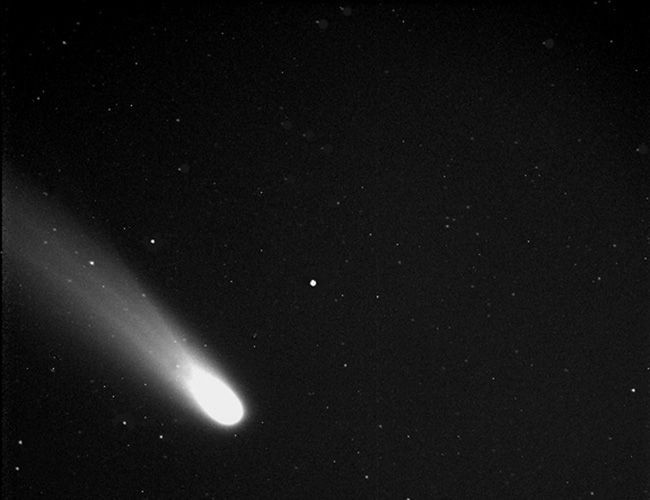
Could we see the "comet of the century" arrive in 2013? While scientists won't know for certain until fall 2013, current research suggests we could be in for an extraordinary light show "brighter than the moon" around the end of November and/or early December 2013.
The comet, named C/2012 S1 ISON, was first discovered in September. The heavenly body of ice and rock likely broke free from the Oort cloud, according to NASA, and is headed in our direction now. If the comet is able to survive its journey before burning up, astronomers claim it could be one of the brightest cosmic events of the century.
NASA's research indicates the comet is currently speeding toward the sun somewhere around the vicinity of Jupiter's orbit. By the time October arrives, if ISON holds course, it should be close to Mars, which may give NASA's rovers an opportunity to observe the object as it waves its tail in their direction. After that, the comet should continue toward the center of the solar system, "passing within a single solar diameter of the sun's surface before heading back more or less the way it came," CNET reported.
"If Comet ISON can survive perihelion passage ... then we are almost surely in for a striking display in the morning sky as Comet ISON recedes from the Sun next December," veteran observer John Bortle said this month on the Comets Mailing List.
"Its immense tail, partly the result of our extremely favorable viewing circumstances in this case and just as with the Great Comet of 1680, could well result in a tail of amazing length and surface brightness, even if tipped by only tiny, relatively insignificant head," Bortle added.
The best part of all this? The ISON comets will be visible in the Northern Hemisphere, unlike similar phenomena such as Comet McNaught in 2007 and Comet Lovejoy in 2011.
If ISON can survive its journey it will come within one million miles of the sun at perihelion Nov. 28, which should be the most dramatic moment to observe the light show, according to NASA.
"Comet Ison could draw millions out into the dark to witness what could be the brightest comet seen in many generations - brighter even than the full Moon," wrote astronomer David Whitehouse in the Independent.
Of course, some astronomers are reserving their excitement until ISON's voyage brings it into an observable distance, ensuring that the object hasn't broken up on its long trip. Scientists have been burned in the past by potentially unique comets breaking up on their way to Earth; some comets, like last year's Comet Elenin, segment and break apart when they slingshot around the sun.
"Comet Elenin springs to mind as a recent example, but there are more famous examples of comets that got the astronomy community seriously worked up, only to fizzle," said Karl Battams of the NASA-supported Sungrazer Comet Project. "This is quite possibly a 'new' comet coming in from the Oort cloud, meaning this could be its first-ever encounter with the Sun. If so, with all those icy volatiles intact and never having been truly stressed (thermally and gravitationally), the comet could well disrupt and dissipate weeks or months before reaching the sun."
For the mean time, check out British educator-astronomer Stuart Atkinson's blog titled "Waiting for ISON." Atkinson is monitorig the comet's progress and providing countdown and analysis leading up to fall 2013.
© 2025 Latin Times. All rights reserved. Do not reproduce without permission.




